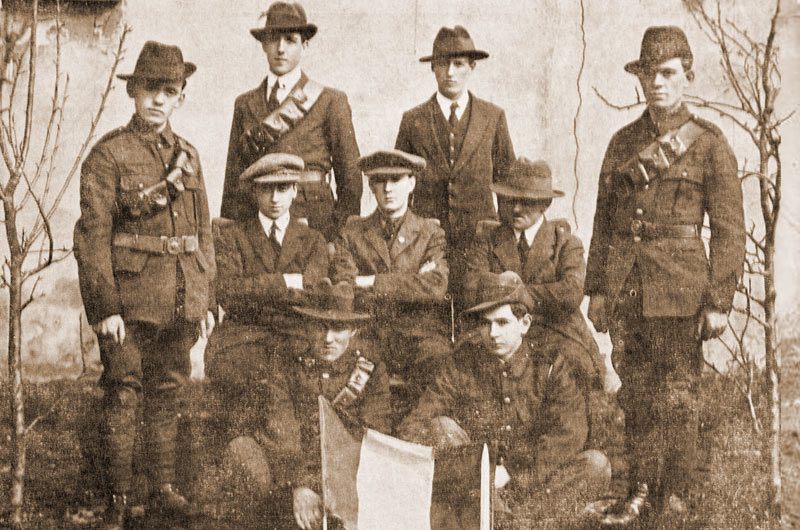

 The Battle of Mount Street Bridge was, militarily, the most successful rebel engagement of the Rising. Though eventually defeated, the rebels held up two nearly full-strength British battalions (some 1750 soldiers) for several hours on Wednesday 26 April. The significant British casualties inflicted by a small band of Volunteers served as a powerful piece of propaganda, emphasising the bravery and sacrifice of the rebellion. On this page learn about the Irish men, four of which lost their lives, who fought on 26 April 1916.
The Battle of Mount Street Bridge was, militarily, the most successful rebel engagement of the Rising. Though eventually defeated, the rebels held up two nearly full-strength British battalions (some 1750 soldiers) for several hours on Wednesday 26 April. The significant British casualties inflicted by a small band of Volunteers served as a powerful piece of propaganda, emphasising the bravery and sacrifice of the rebellion. On this page learn about the Irish men, four of which lost their lives, who fought on 26 April 1916.
Michael Malone (1888-1916)

Michael Malone (1888-1916)
Michael Malone, lieutenant, cycling corps, 3rd Battalion, Dublin Brigade of the Irish Volunteers. Malone was the officer in charge of the positions surrounding Mount Street Bridge and occupied No. 25 Northumberland Road, where he was killed by rifle fire.
Michael Malone (1888-1916), lieutenant, 3rd Battalion, Dublin Brigade of the Irish Volunteers. Born in Dublin, Malone was a carpenter who had won prizes in art and drawing from the Technical Schools. A devout Catholic, he was a member of St Patrick’s Confraternity in Ringsend, Dublin (Catholic Bulletin, 1916). Having joined the Irish Volunteers in 1913, Malone was given the rank of lieutenant in the cycling corps of Éamon de Valera’s 3rd Battalion.
Described as ‘the crack shot of his Company’, Malone was the officer in charge of the Volunteer positions surrounding Mount Street Bridge during the Rising (Catholic Bulletin, 1916). With Seamus Grace, Malone occupied No. 25 Northumberland Road. Having fired on a column of the unarmed Volunteer Training Corps on Easter Monday and a troublesome sniper on Tuesday, on Wednesday morning Malone sent home two young Volunteers for their own safety, allegedly declaring ‘We know what we are dying for, thank God the day has come.’ As units of Sherwood Foresters approached No. 25, Malone took up position in a third floor bathroom window. Armed with a modified Mauser automatic pistol (nicknamed a ‘Peter the Painter’), Malone was personally responsible for a number of the military casualties. He was killed by rifle fire as No. 25 was stormed by a company of men from the 2/7th Sherwood Foresters (MAI, MSPR 34/REF/368; MAI, BMH WS 310; Catholic Bulletin, 1916).
Michael Malone’s body was buried by British soldiers in the backyard of No. 25 but later reinterred in the Republican Plot at Glasnevin Cemetery (MAI, MSPR 1D315).
Seamus Grace (1888-1959)

Seamus Grace (1888-1959)
Seamus Grace, Volunteer, C Company, 3rd Battalion, Dublin Brigade of the Irish Volunteers. With Michael Malone, Grace occupied No. 25 Northumberland Road. When the building was stormed by Sherwood Foresters, Grace managed to escape but was later captured and arrested.
Seamus (James Joseph) Grace (1888-1959), Volunteer, C Company, 3rd Battalion, Dublin Brigade of the Irish Volunteers. A native of Dublin, Grace worked as a General Clerk in College of Surgeons s (NAI, 1911 census returns). Grace joined the Irish Republican Brotherhood around 1912 but left Ireland in 1913 for America. After eighteen months he moved to Canada where he joined the Canadian army before defecting and returning to Ireland in 1915. Back in Dublin he immediately joined the Irish Volunteers. In 1916, Grace was living on the South Circular Road in Dublin (MAI, BMH WS 310).
On Easter Monday, Grace occupied No. 25 Northumberland Road with Lieutenant Michael Malone and two young Volunteers. Involved in an encounter with a column of the unarmed Volunteer Training Corps on Easter Monday, Grace and Malone were also fired at by a sniper on Monday and Tuesday before he was taken out by Malone. On Wednesday, the two younger Volunteers were ordered home by Malone. Once the attack began on the Sherwood Foresters advancing towards Mount Street Bridge on Wednesday afternoon, Grace moved from window to window to return fire. Years later, he described how ‘I trembled from head to foot in a panic of fear and it was only when I was able to reply to the fire that I could overcome the fear’ (MAI, BMH WS 310). As No. 25 was taken by the Sherwood Foresters, Grace managed to escape through the basement but was later captured and arrested in an outhouse on Haddington Road when its owner informed the military.
Having been released from prison in December 1916, he rejoined the Irish Volunteers and was active during the War of Independence – suffering a gunshot wound to the leg – and in the Anti-Treaty IRA during the Civil War. Grace was unable to carry out an occupation after 1923 and by the 1930s was in poor physical and mental health, spending a period in Grangegorman mental institution in 1944.
Seamus Grace died in May 1959 and is buried in Mount Jerome Cemetery (MAI, MSPR W1/P/421; MAI, MSPR W1/RB/4467).
George Reynolds (1878-1916)

George Reynolds (1878-1916)
George Reynolds, section commander, C Company, 3rd Battalion, Dublin Brigade of the Irish Volunteers. Reynolds was in command of the garrison in Clanwilliam House and was killed during the fighting.
George Reynolds (1878-1916), section commander, C Company, 3rd Battalion, Dublin Brigade of the Irish Volunteers. Born in Dublin and educated at the Christian Brothers’ School on Synge Street, Reynolds trained as an ecclesiastical and general silversmith and owned a shop in Abbey Street in the city centre. He lived in Redmond’s Hill with his siblings; two of his sisters ran a shop from the premises. Reynolds joined the Gaelic League, becoming a fluent Irish speaker, before becoming a member of the Irish Volunteers around 1915. He was described as being of ‘unobtrusive disposition, and fond of athletic and outdoor pastimes, cycling, walking, fishing’ (NAI, 1901 census returns; NAI, 1911 census; MAI, MSPR WDP6236; Catholic Bulletin, 1916).
On Easter Monday, Reynolds was given command of the garrison of Volunteers in Clanwilliam House, which by Wednesday numbered seven. The last rebel post to fall during the Battle of Mount Street Bridge, the house sustained continued assault before eventually catching fire. Reynolds was hit by rifle fire and killed, one of three members of the garrison to die during the fighting. Aged thirty-eight during Easter week, Reynolds was among the eldest and most senior Volunteers to take part in the battle. His body was incinerated in the flames that engulfed Clanwilliam House (MAI, BMH WS 127; MAI, BMH WS 309; MAI, BMH WS 198).
Patrick ‘Paddy’ Doyle (c.1880-1916)

Patrick ‘Paddy’ Doyle (c.1880-1916)
Paddy Doyle, adjutant, E company, 3rd Battalion, Dublin Brigade of the Irish Volunteers. Doyle was a member of the Clanwilliam House garrison and was killed during the fighting.
Patrick (Paddy) Doyle (c. 1880-1916), adjutant, E company, 3rd Battalion, Dublin Brigade of the Irish Volunteers. Doyle was born in Dundrum, County Dublin, and was living in Milltown and working as a labourer in 1916. A devout Catholic and member of the Gaelic League, Doyle was a member of the Milltown Temperance and Sacred Heart Sodalities, said the rosary daily in Milltown Church, and taught Irish classes in the area. By 1916 he was married and the father to five young children (Catholic Bulletin, 1916).
Having originally joined the main contingent of the 3rd Battalion in Boland’s Bakery under Éamon de Valera on Easter Monday, Doyle was sent by Simon Donnelly, commandant of C Company, to reinforce the small garrison in Clanwilliam House on Wednesday morning. The last rebel post to fall during the Battle of Mount Street Bridge, the house sustained continued assault before eventually catching fire. Doyle was killed by rifle fire, one of three members of the garrison to die in the fighting, and his body was incinerated by the flames that engulfed Clanwilliam House and never recovered (MAI, BMH WS 127; MAI, BMH WS 309; MAI, BMH WS 198). On Easter Monday he had written a short note to his wife: ‘Sarah, all well, do not fret, will be alright’ (NLI, Ms. 46,594).
One of Doyle’s sons was killed fighting with the National Army during the Civil War (MAI, MSPR W/2D50).
Richard ‘Dick’ Murphy (c. 1892-1916)

Richard ‘Dick’ Murphy (c. 1892-1916)
Richard ‘Dick’ Murphy, member, B Company, 3rd Battalion, Dublin Brigade of the Irish Volunteers. Murphy was a member of the garrison in Clanwilliam House and was killed during the fighting.
Richard ‘Dick’ Murphy (c. 1892-1916), member, B Company, 3rd Battalion, Dublin Brigade of the Irish Volunteers. Born in Dublin, the second eldest son of eight children who survived to adulthood (eleven children were born to his parents), Murphy trained for a career as a tailor. In 1911 he was living with his parents and siblings in South William Street in the centre of the city, but by 1916 was set to be married having secured a ‘modest house’. He had, apparently, deferred the wedding to care for his widowed mother but had arranged to marry within a week when the Easter Rising broke out (NAI, 1911 census returns; Catholic Bulletin, 1917).
Having originally joined the main contingent of the 3rd Battalion in Boland’s Bakery under Éamon de Valera on Easter Monday, Murphy was one of the men sent by Simon Donnelly, commandant of C Company, to reinforce the small garrison in Clanwilliam House on Wednesday morning. The last rebel post to fall during the Battle of Mount Street Bridge, the house sustained continued assault before eventually catching fire. Murphy was killed by rifle fire and was seen to have died in his fighting position, still holding his rifle. He was one of three members of the garrison to die in the fighting, and his body was incinerated by the flames that engulfed Clanwilliam House and never recovered (Catholic Bulletin, 1917; MAI, BMH WS 127; MAI, BMH WS 309; MAI, BMH WS 198).
William Rownan (1889-1965)

William Rownan (1889-1965)
William Ronan (or Rownan), member, C Company, 3rd Battalion, Dublin Brigade of the Irish Volunteers. Ronan was a member of the garrison in Clanwilliam House and one of four to survive the battle.
William Ronan (or Rownan) (1889-1965), member, C Company, 3rd Battalion, Dublin Brigade of the Irish Volunteers. Ronan was born in Dublin to Kilkenny parents and was the eldest of three children surviving to adulthood. He trained as a paper-cutter and in 1911 was living with his parents in Longford Street, Dublin (NAI, 1911 census returns). He joined the Irish Volunteers in August 1914 (MAI, MSPR WDP/6415-2).
Ronan was one of the men who, under Section Commander George Reynolds, occupied Clanwilliam House on Easter Monday 1916. Ronan remained there until the fall of the house at the end of the battle on Wednesday, when he escaped. He was arrested the following day and imprisoned in England until August 1916. It was later claimed that Ronan was severely beaten by a soldier in Kilmainham Gaol after his arrest and suffered poor health afterwards. (MAI, MSPR 34/E/5552, WDP/6415-2).
Ronan was later active in the IRA in Dublin during the War of Independence, though in an intelligence and auxiliary capacity owing to his nervous state. During the Civil War he participated on the Anti-Treaty side and was interned in 1923. Ronan married in 1918 and had three children but spent his last decades in mental institutions suffering from ‘delusional insanity attributable to military service’. Ronan was a patient in St Brendan’s, Grangegorman from 1933 to 1938 and then St. Ita’s, Donabate until his death on 8 September 1965 (MAI, MSPR, 34/E/5552, WDP/6415-1, WDP/6415-2, W1/RB/1962).
WIlliam Ronan is buried in Deansgrange Cemetery.
James Joseph Doyle (1898-1980)

James Joseph Doyle (1898-1980)
James Doyle, member, C Company, 3rd Battalion, Dublin Brigade of the Irish Volunteers. Doyle was a member of the garrison in Clanwilliam House and one of four to survive the battle.
James Joseph Doyle (1898-1980), member, C Company, 3rd Battalion, Dublin Brigade of the Irish Volunteers. Born in Wicklow in 1898, and second eldest of five children, Doyle moved to Dublin in 1914 and was working as a shop assistant. There, in October 1914, he joined the Irish Volunteers and was sworn into the Irish Republican Brotherhood about a month before the Easter Rising (NAI, 1911 census; MAI, BMH WS 127, WS 309; MAI, MSPR 34/REF/20659).
Doyle was one of the men who, under Section Commander George Reynolds, occupied Clanwilliam House on Easter Monday 1916. Doyle took part in the defence of Clanwilliam House and remained there until its fall at the end of the battle on Wednesday, when he escaped. Towards the end of the fighting Doyle’s rifle exploded and rendered him temporarily unconscious. Though badly hurt during his escape, he managed to avoid detection and arrest, eventually leaving the city before returning in December 1916 (MAI, BMH WS 127, WS 309).
Doyle was attached to the active service unit of the 3rd battalion, Dublin Brigade during the War of Independence and took part in a number of operations, including the killings on Bloody Sunday 1920. He was arrested after a large-scale attack on the Custom House in May 1921 and imprisoned until December but did not take part in the Civil War. (MAI, MSPR 34/REF/20659). After the Rising, Doyle worked as a shop assistant in Redmond’s Hill, in the shop run by sisters of George Reynolds (killed in Clanwilliam House). By the late 1920s he claimed to suffer from deafness and nerves as a result of the explosion of his rifle in 1916. Doyle was unmarried and had no children. (MAI, MSPR WDP/1345).
James Doyle died in Baltinglass on 21 July 1980 (Irish Press, 22 Jul. 1980).
James Walsh (1898-1957)

James Walsh (1898-1957)
James Walsh, member, B Company, 3rd Battalion, Dublin Brigade of the Irish Volunteers. Walsh was a member of the garrison in Clanwilliam House and, along with his brother Thomas, one of four to survive the battle.
James Walsh (1898-1957), member of B Company, 3rd Battalion, Dublin Brigade of the Irish Volunteers. Born in Dublin in 1899, Walsh’s father was a coal factor and his parents ran a greengrocer’s from the family home in East James’s Street in the city. He joined a company of the Irish Volunteers in Sandymount shortly after their formation in 1913; his older brother Thomas had earlier joined the same company. It was after the split with the supporters of John Redmond in 1914 that James joined B Company, 3rd Battalion. Between 1914 and 1916 the Walsh brothers and their father assisted in the transportation of arms for the Irish Volunteers. (MAI, BMH WS 198; NAI, 1911 census returns). James and Thomas Walsh spent the majority of their service with both the Irish Volunteers and the Irish Republican Army (IRA) together.
On Easter Monday 1916, they joined the rebels in Boland’s Bakery under Éamon de Valera. The following day, James and Thomas were dispatched to Westland Row train station and on returning were informed that they would be among four men being sent to reinforce the garrison in Clanwilliam House. Both took part in the defence of Clanwilliam House and remained inside until its fall on Wednesday evening. Having encountered a ‘hostile mob’ in Mount Street on his escape from Clanwilliam House, and unable to return to Boland’s, James Walsh spent the rest of the Rising in hiding in halls and houses around the Baggot Street area. He and his brother remained on the run in the homes of family and friends, including a period together in the Beaumont Convalescent Home, until December 1916 (MAI, BMH WS 198; MAI, MSPR 34/REF/10243).
Walsh was active in the IRA during the War of Independence, primarily transporting and distributing arms, and was on duty as a cyclist on ‘Bloody Sunday’ 1920. He was arrested in December 1920 and imprisoned in Ballykinlar internment camp, County Down, until December 1921 but took no part in the Civil War (MAI, MSPR 34/REF/10243).
James Walsh died in Dublin on 12 February 1957. He was unmarried and had no children (MAI, MSPR 34/E/1027).
Thomas Walsh (1899-1970)

Thomas Walsh (1899-1970)
Thomas Walsh, member, B Company, 3rd Battalion, Dublin Brigade of the Irish Volunteers. Walsh was a member of the garrison in Clanwilliam House and one of four to survive the battle.
Thomas Walsh (1899-1970), member, B Company, 3rd Battalion, Dublin Brigade of the Irish Volunteers. Born in Dublin in 1894, and the eldest of six children who survived to adulthood, Walsh trained as a carpet layer. His father was a coal factor and his parents ran a greengrocer’s from the family home in East James’s Street in the city. Walsh joined a company of the Irish Volunteers in Sandymount shortly after their formation in November 1913; his brother James soon joined the same company. It was after the split with the supporters of John Redmond in 1914 that Thomas and James Walsh joined B Company, 3rd Battalion. Between 1914 and 1916, the Walshs and their father assisted in the transportation of arms for the Irish Volunteers. (MAI, BMH WS 198; NAI, 1911 census returns). Thomas and James Walsh spent the majority of their service in the Irish Volunteers and Irish Republican Army (IRA) together.
On Easter Monday 1916, Thomas Walsh and his brother joined the rebels in Boland’s Bakery under Éamon de Valera. The following day, they were dispatched to Westland Row train station and on returning were informed that they would be among four men being sent to reinforce the garrison in Clanwilliam House. Both took part in the defence of Clanwilliam House and remained inside until its fall on Wednesday evening. Thomas was briefly knocked unconscious by his Mauser rifle after firing it for the first time on Wednesday afternoon. Having escaped from the burning Clanwilliam House, he encountered opposition from locals in Mount Street, whom he threatened with his revolver, and was forced to seek shelter. Unable to return to Boland’s, Walsh spent the rest of the Rising in hiding in halls and houses around the Baggot Street area. He and his brother remained on the run in the homes of family and friends, including a period together in the Beaumont Convalescent Home, until December 1916 (MAI, BMH WS 198; MAI, MSPR 34/REF/8975).
Thomas Walsh remained active in the republican movement after 1916. He served as a company transport officer during the War of Independence and the family home was used as an arms dump. He was on active service as a cyclist during ‘Bloody Sunday’ 1920 and later claimed that he had offered his services to the anti-Treaty IRA during the Civil War but had never been called to take part in armed action (MAI, MSPR MSPR 34/REF/8975). Walsh was married with two sons and two daughters.
Thomas Walsh died on 2 December 1970 (Irish Times, 4 Dec. 1970).
Patrick Doyle

Patrick Doyle
Patrick Doyle, member, C Company, 3rd Battalion, Dublin Brigade of the Irish Volunteers. Doyle was in charge of the garrison of four men who occupied St. Stephen’s Parochial Hall on Easter Monday 1916 until the position was abandoned during the battle on Wednesday.
Patrick Doyle, member, C Company, 3rd Battalion, Dublin Brigade of the Irish Volunteers.
Some time before 1916, Doyle joined the Dublin Brigade of the Irish Volunteers and was mobilised on Easter Monday 1916. That day, Doyle was in charge of the garrison of four men who occupied St. Stephen’s Parochial Hall on Northumberland Road. On Wednesday afternoon, the men in the hall fired on the Sherwood Foresters moving towards Mount Street Bridge until their ammunition ran out and they evacuated the building. Doyle was armed with a Howth Mauser, said to be the only reliable gun in the building, and, in William Christian’s words, ‘made that gun do the work of six’ (MAI, BMH WS 646).
By the 1940s, Patrick Doyle had become a superintendent in the Garda Síochána (MAI, BMH WS 208).
Joseph Clarke (1882-1976)

Joseph Clarke (1882-1976)
Joseph Clarke, member, C Company, 3rd Battalion, Dublin Brigade of the Irish Volunteers. Clarke was one of four men who occupied St. Stephen’s Parochial Hall on Easter Monday 1916 until the position was abandoned during the battle on Wednesday.
Joseph Clarke (1882-1976), member, C Company, 3rd Battalion, Dublin Brigade of the Irish Volunteers. Born in Rush, County Dublin, Clarke left school aged eleven and worked variously as a kitchen porter, boot-shop assistant, harness-maker and van driver. In 1913, he joined the Irish Republican Brotherhood and later the 3rd Battalion, Dublin Brigade of the Irish Volunteers (DIB).
On Easter Monday 1916, Clark was one of the four men who occupied St. Stephen’s Parochial Hall on Northumberland Road. On Wednesday afternoon, the men in the hall fired on the Sherwood Foresters moving towards Mount Street Bridge until their ammunition ran out and they evacuated the building. William Christian remembered Clarke ‘hunched behind one of the windows, tugging at his Martini rifle and murmering “O my God, O my God” and exclaiming that his ‘ammunition was a dud’. Having attempted to escape, Clarke was captured at Percy Place by the military (MAI, BMH WS 646). After the Rising he was interned in Wakefield prison and Frongach (DIB).
After his release, Clarke lived and worked at the Sinn Féin headquarters and acted as a courier to Dáil Éireann during the War of Independence. He also served as a Dublin city councillor. During the Civil War, Clarke took the anti-Treaty side and spent several periods in prison between 1922 and 1924, often suffering rough treatment from Free State forces. Clarke remained an active and vocal republican activist for the rest of his life. After the 1970 Sinn Féin split, Clarke became an honorary vice-president and member of the ard comhairle of the provisional wing of the movement. He was married twice (to Anne Hughes in 1909 and Elizabeth Delaney in 1949) and had three children (DIB).
Joseph Clarke died on 22 April 1976 and is buried in the republican plot at Glasnevin cemetery (Irish Press, 23 Apr. 1976).
Robert Cooper (1894-1962)
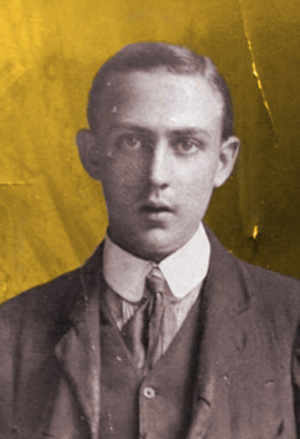
Robert Cooper (1894-1962)
Robert Cooper, member, C Company, 3rd Battalion, Dublin Brigade of the Irish Volunteers. Cooper first occupied St. Stephen’s School on Northumberland Road before retreating to Boland’s Bakery and later occupying Roberts’ builders yard.
Robert Cooper (1894-1962), member, C Company, 3rd Battalion, Dublin Brigade of the Irish Volunteers. A native of Dublin, Robert was born in Grattan Street in 1894. His father, George was from the north of England and his mother Annie Carney was from Monaghan. George and Annie had been on the road with the circus before settling in Dublin. George, a musician, was the bandmaster and Annie, a dressmaker, was the wardrobe mistress.
Cooper worked for Jacob’s Biscuit Factory for most of his working life. Before 1916 he had been a ‘case-maker’. When he returned to work after the Rising he lost this skilled position and was instead employed as a general labourer.
Cooper was one of the rebels who occupied St. Stephen’s Schoolhouse on Northumberland Road on Easter Monday morning. The position was soon abandoned and Cooper was sent back to Boland’s Bakery, where the commandant of the 3rd Battalion, Éamon de Valera, was based. On Wednesday morning, he was sent with three other Volunteers to Robert’s builders yard where he took up a position on the roof of a shed. Cooper and his companions held the yard and kept up fire on British troops advancing towards Mount Street Bridge, until Clanwilliam House fell later that day. They retreated to back to Boland’s Bakery.
The following day Cooper was sent out on the railway line to Kingstown (Dún Laoghaire). It was here that he was shot in the chest by friendly fire and taken to Sir Patrick Dun’s hospital. The bullet was never removed from his chest and remained there for the rest of his life. Cooper was arrested and taken to Richmond Barracks in Inchicore. From there he was taken on a cattle boat to Hollyhead. Cooper was initially held in Wakefield Jail before being moved to Frongoch internment camp. He was released from Frongoch in early August.
Having returned from Frongoch, Cooper remained active with the Irish Volunteers until 1920. He married Susan Bright in 1921, they had 8 children and settled in Inchicore in 1931 (close to Richmond Barracks). Cooper was a toy maker as well as working in Jacob’s and supplied many of the large department stores (like Clerys) in Dublin with toy soldiers for Christmas. Robert Cooper passed away at home on 22 December 1962 (Information courtesy of Deirdre Williams).
William Christian (1895-1961)

William Christian (1895-1961)
William Christian, member, C Company, 3rd Battalion, Dublin Brigade of the Irish Volunteers. Christian was a member of the garrison who occupied St. Stephen’s Parochial Hall on Easter Monday 1916 until the position was abandoned during the fighting on Wednesday.
William Christian (1895-1961), member, C Company, 3rd Battalion, Dublin Brigade of the Irish Volunteers. A native of Dublin, Christian joined the nationalist boy scouts, Na Fianna Éireann, in 1911 and was a member of the Fianna band. After turning 18 in 1915 he joined B Company, 3rd Battalion (MAI, BMH WS 646).
Christian was one of four men who occupied St. Stephen’s Parochial Hall on Northumberland Road on Easter Monday. On Wednesday afternoon, the men in the hall fired on the Sherwood Foresters moving towards Mount Street Bridge until their ammunition ran out and they evacuated the building. Attempting to make his way to Boland’s Bakery, Christian was captured by the military in Percy Place and, having been held in Dublin for a period, was transferred to Frongach and Wandsworth prisons where he was interned until July 1916 (MAI, BMH WS 646; MAI, MSPR 34/REF/20099).
Christian did not take any part in the War of Independence or Civil War. Following a period of unemployment in the early 1930s, Christian found work as a porter in the Custom House in Dublin and was on the staff there for over 20 years.
William Christian died in October 1961 aged 60 (MAI, MSPR 34/REF/20099; Sunday Independent, 29 Oct. 1961).
Denis O’Donoghue (c.1884-1965)

Denis O’Donoghue (c.1884-1965)
Denis O’Donoghue, adjutant, C Company, 3rd Battalion, Dublin Brigade of the Irish Volunteers. O’Donoghue was in command at St. Stephen’s School on Northumberland Road before retreating to Boland’s Bakery and later occupying Roberts’ builders yard.
Denis O’Donoghue (c.1884-1965), adjutant, C Company, 3rd Battalion, Dublin Brigade of the Irish Volunteers. O’Donoghue moved to Dublin to work as a railway clerk and joined the Irish Volunteers there in 1913. In 1914 he took part in the Howth gun-running. By Easter 1916, O’Donoghue had been appointed adjutant of C Company (MAI, BMH WS 127; MAI, MSPR 34/REF/20580; Irish Press, 15 Apr. 1965).
On Easter Monday morning, O’Donoghue commanded the group of rebels who occupied St. Stephen’s Schoolhouse on Northumberland Road. The position was soon abandoned and O’Donoghue went to Boland’s Bakery, where the commandant of the 3rd Battalion, Éamon de Valera, was based. He then spent much of Tuesday and Wednesday morning travelling to various outposts around the city before taking up a position on a shed roof at Roberts’ builders yard with three other Volunteers. They held the yard, and kept up fire on British troops advancing towards Mount Street Bridge, until an order was received to retreat to Boland’s late on Wednesday. On Thursday, O’Donoghue attempted to secure an engine driver and engine for use by the Boland’s garrison but was captured by the military. He later escaped and remained in hiding until Sunday 30 April, avoiding arrest in the aftermath of the Rising (MAI, MSPR 34/REF/20580).
O’Donoghue returned to his company in 1917 but in 1919 took up a position in the Dáil Éireann Department of Trade and Commerce as private secretary to the minister, Ernest Blythe. After the War of Independence he was employed in the Department of Industry and Commerce and was a junior executive officer by the time of his retirement in 1946. O’Donoghue was married with two children by 1916 and eventually had eight sons and two daughters.
Denis O’Donoghue died in Dublin on 11 April 1965 (MAI, MSPR 34/REF/20580; Irish Press, 15 Apr. 1965).
Seamus Doyle (d. 1964)

Seamus Doyle (d. 1964)
Seamus Doyle, member, F Company, 1st Battalion, Dublin Brigade of the Irish Volunteers. Doyle first occupied St. Stephen’s School on Northumberland Road before retreating to Boland’s Bakery and later occupying Roberts’ builders yard.
Seamus Doyle (d. 1964), member, F Company, 1st Battalion, Dublin Brigade of the Irish Volunteers. Doyle lived in Dublin and joined the Irish Volunteers on their foundation in 1913. He was sworn into the Irish Republican Brotherhood by Jack Shouldice. A native of Dublin and member of St. Kevin’s Hurling Club, Doyle worked for ten years at the Dublin Gas Company, first as a coin collector and later as a rental clerk. He lost his position there in April 1916 having left work to take part in the Easter Rising (MAI, BMH WS 166; MAI, MSPR 34/REF/814; Irish Press, 15 Aug. 1964).
Although a member of the 1st Battalion of the Dublin Brigade, Doyle had agreed to fall in with the 3rd Battalion on Easter Sunday 1916, as he was then living in their area (MAI, MSPR, 34/REF/814). Doyle was one of the rebels who occupied St. Stephen’s Schoolhouse on Northumberland Road on Easter Monday morning. The position was soon abandoned and Doyle went instead to Boland’s Bakery, where the commandant of the 3rd Battalion, Éamon de Valera, was based. On Wednesday morning, he was sent with three other Volunteers to Robert’s builders yard where he took up a position on the roof of a shed. Doyle and his companions held the yard, and kept up fire on British troops advancing towards Mount Street Bridge, until an order was received to retreat to Boland’s Bakery late that day. Doyle remained part of the Boland’s Bakery garrison until they surrendered on Sunday; he was arrested and interned in Frongach prison camp in North Wales until July 1916 (MAI, BMH WS 166; MAI, MSPR 34/REF/814).
Having returned from Frongach, Doyle was once again active in the Irish Volunteers and was involved in the anti-conscription movement and the 1918 General Election campaign as a Sinn Féin organiser. During the War of Independence Doyle was a member of the staff of the first Dáil and also took part in several operations with the Dublin Brigade of the Irish Republican Army, including a failed attack on the Custom House in April 1920. By 1921 Doyle was working for Donnelly’s Bacon Curers but soon lost his job there. He took no part in the Civil War and was employed by the Freeman’s Journal until the newspaper folded and he began work for the Electricity Supply Board (MAI, MSPR 34/REF/814.
Seamus Doyle died on 14 August 1964; he was married with three sons and two daughters (Irish Press, 15 Aug. 1964).
Killed in Action
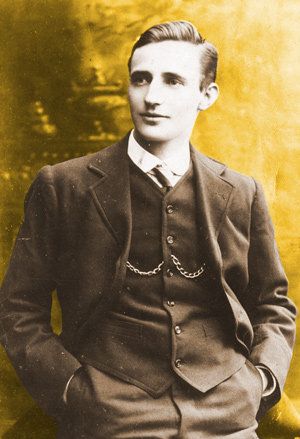
Michael Malone
Lieutenant, 3rd Battalion, Dublin Brigade, Irish Volunteers
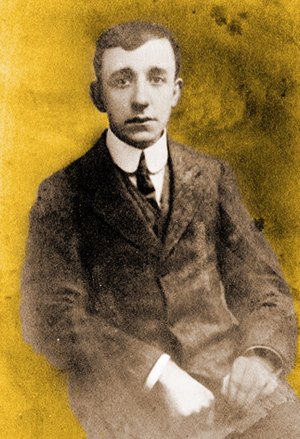
George Reynolds
Section Commander, C Company, 3rd Battalion, Dublin Brigade, Irish Volunteers
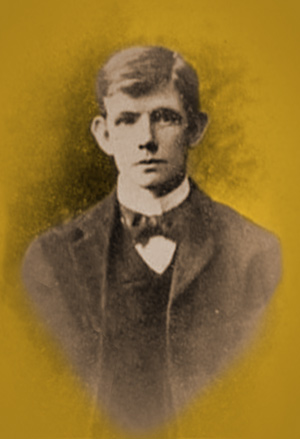
Paddy Doyle
Adjutant, E company, 3rd Battalion, Dublin Brigade, Irish Volunteers
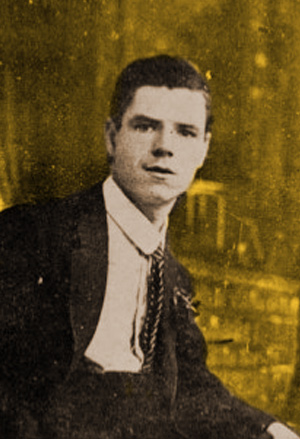
Richard Murphy
B Company, 3rd Battalion, Dublin Brigade of the Irish Volunteers

